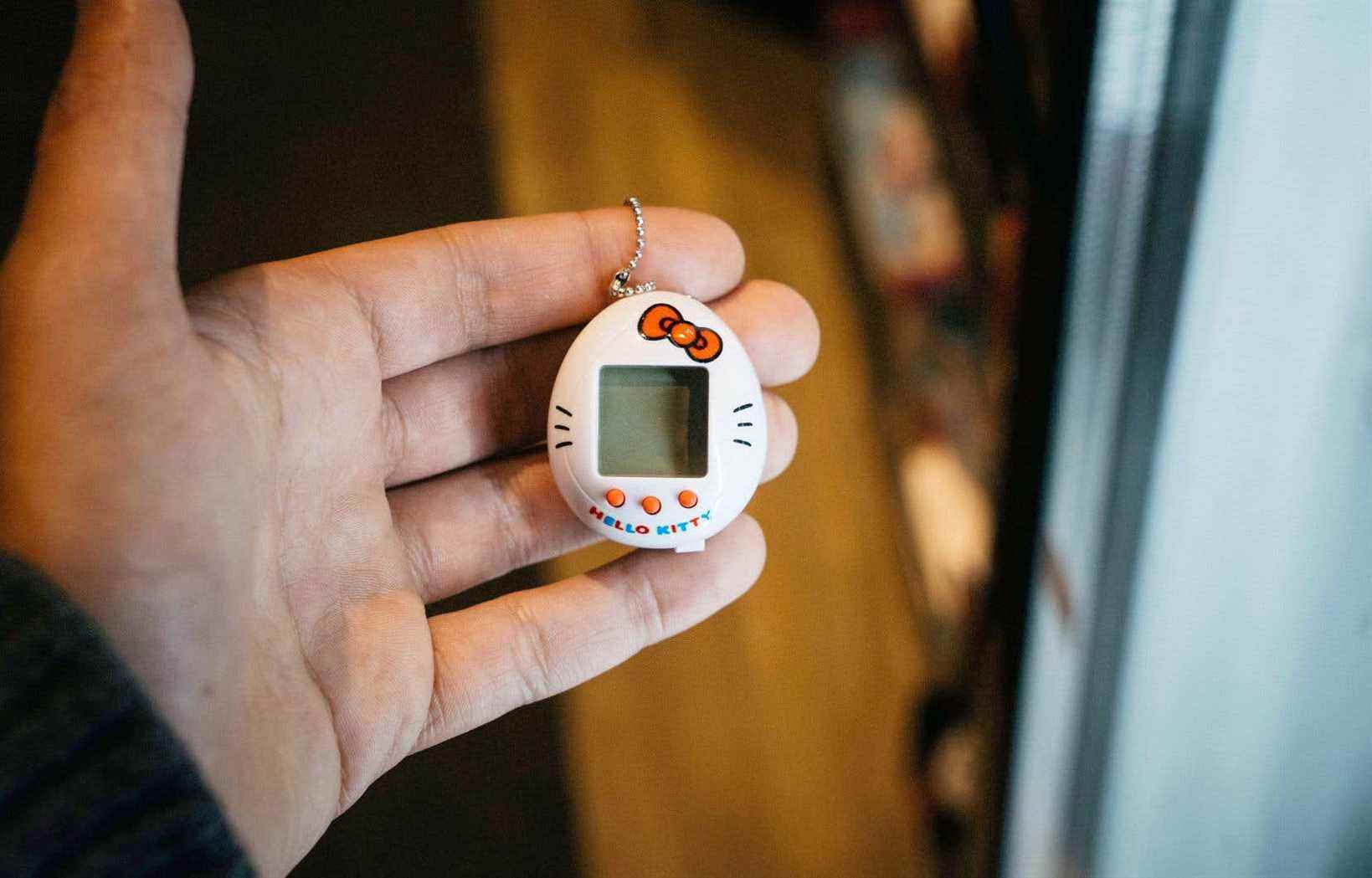They seduced legions of children from Asia to America via Europe, invaded schoolyards at the end of the 1990s, gave headaches to parents… The Tamagotchis, these small electronic creatures, which were born on November 23, 1996 in Japan and flooded the rest of the world the following year, are celebrating their 25th birthday. We take a look back at a phenomenon that has met with tremendous success and that continues to arouse nostalgia.
On rue Saint-Hubert in Montreal, the Chez Rhox boutique, specializing in merchandise inspired by “pop and geek culture”, still sells a few Tamagotchi models. “It’s not our most popular product, but we still sell quite a bit,” explains Rhox Forgues, owner of the store. About 10 to 15 per month, she says.
“I think these are a bit of nostalgic purchases. I’m in my thirties and I see that these are people my age who are starting to have children and buying them Tamagotchis – kind of like to pass on to them the passion they had when they were young. Half of the people buy it for themselves, the other half to give it to a child, ”emphasizes the shopkeeper.
A dazzling success
No bigger than a keychain and shaped like a small egg with three control buttons, the Tamagotchi was developed by the Japanese company Bandai. Since its creation, this little virtual companion who flutters on a pixelated screen and claims that its owner takes care of him has sold more than 83 million units worldwide.
Who could have predicted the success of Tamagotchi? In an interview with New York Times in 1997, Aki Maita, an employee of the toy launch team at Bandai and considered to be the co-inventor of the toy alongside Akihiro Yokoi, confided that the initial reactions were in disbelief and that people did not understand. ‘interest. “In fact, we had trouble selling it to toy shops, some refused to order it from us,” she said.
However, the success that followed was monster, to the point of going beyond the borders of the Empire of the Rising Sun and conquering the rest of the world. Of all units sold, about 60% were sold outside of Japan, in more than 50 regions and countries, according to Bandai.
Adored by some, hated by others, the Tamagotchis left no one indifferent, from parents exasperated by the untimely “beep beep” to teachers discouraged by seeing students obsessed with their screens. These little virtual companions quickly captured their owner’s attention with sound alerts. Today, mobile apps that use notifications push have taken over.
In 25 years, Tamagotchi has evolved, and the models have become more and more varied. If some continue to be inspired by the originals, there are now some in color. The variations of style are multiplying, from the “PacMan” edition, to the “Star Wars” or even “Hello Kitty” edition. Latest novelty: the Tamagotchi in the form of a watch, now tactile.
Inveterate enthusiasts
Two and a half decades after its release, Tamagotchi has carved out a place for itself among cult toys and continues to be popular, especially with adults who adopted it as a child. This is the case of Samantha Tan, a young woman aged 31 who lives in South Korea. “I think my first Tamagotchi came from a gacha machine [une machine distributrice de jouets] in Malaysia when I was 7 or 8 years old ”, she tells the To have to.
“I lost it one day and never owned it again until a few years ago. I started to think about it and do some research. I bought a used one back in 2017 – and after that I continued to buy more. I lost count, but I’m sure I must have bought more than 120 small eggs over time, ”says the collector, who currently takes care of a handful of them and doesn’t hesitate. to bring them with her outside or to work.
Like her, many are still addicted to it. Tamagotchis’ largest resale group on Facebook has nearly 6,500 users. Another group of the social network, intended to bring together fans and collectors, has nearly 8,000 Internet users who exchange daily on the platform.
The many reissues of Tamagotchi continue to fuel the passion of enthusiasts and their enthusiasm, although its success is far from that of its debut.
In 1997, in an editorial by The Gazette, there were serious doubts that Tamagotchi’s popularity could last and be successful like Barbie’s – after Matel’s doll had just blown its 38 candles at the time. “It is unlikely that Tamagotchi can enjoy such longevity,” it was suggested. This is still not the case, of course. But we have to admit that the virtual chick is far from dead in the bud.
